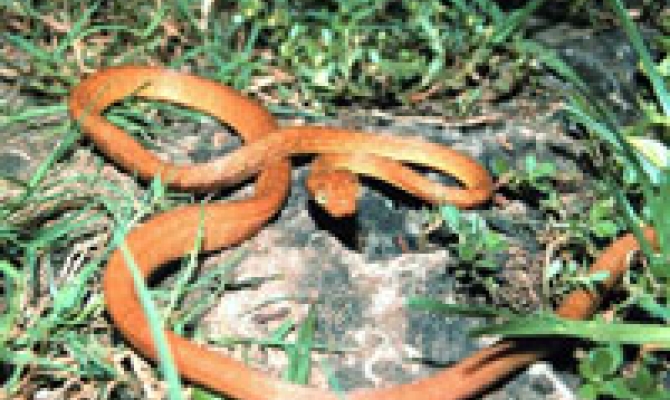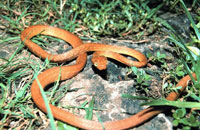
Biodiversity Conservation
5 July 2013, Nadi, Fiji - Invasive species are a major environmental and economic issue in the Pacific region but it is under supported financially in terms of the scale of the problem, said SPREPs' Director for Biodiversity and Ecosystem Management, Stuart Chape.
In an interview, he says that invasive species are one of the biggest impact issues in the Pacific.

These invasive species include plants and animals.
Chape said that Pacific Island Countries and Territories need to try to prevent invasive species from getting on to their islands and if they do get in, then to immediately control and to get rid of them or else they might spread causing minor to major damage to the ecosystem.
The Brown Tree snake in Guam was used as an example of an invasive species where the government used up to US$7 million dollar a year to try and deal with this, but it's still there.
SPREP's Director for Biodiversity and Ecosystem Management hopes that within two years – they can get a wide-ranging assessment on the financial, economic and social impact of invasive species in countries.
He added that SPREP will seek endorsement of member countries and territories to secure major GEF (Global Environment Facility) funding to deal with invasive species in the GEF-6 allocation at this year's SPREP Meeting.
Meanwhile, SPREP is implementing a US$3 million project funded by GEF-PAS for 10 countries which he says is not a lot of money given the scale of the issue. For SPREP to be able to provide support to implement its invasive species plan effectively they need to secure a US$20 million dollar project.
Chape also encouraged Pacific countries that when looking for funding to deal with climate change adaptation, they need to take into consideration the links between invasive species and climate change.
He says Pacific islands will be more at risk to invasive species coming in as climate and weather patterns change and temperatures rise.
Adding on to this countries need to be more vigilant and start building invasive species issues into their climate adaptation strategies.
In an interview, he says that invasive species are one of the biggest impact issues in the Pacific.

These invasive species include plants and animals.
Chape said that Pacific Island Countries and Territories need to try to prevent invasive species from getting on to their islands and if they do get in, then to immediately control and to get rid of them or else they might spread causing minor to major damage to the ecosystem.
The Brown Tree snake in Guam was used as an example of an invasive species where the government used up to US$7 million dollar a year to try and deal with this, but it's still there.
SPREP's Director for Biodiversity and Ecosystem Management hopes that within two years – they can get a wide-ranging assessment on the financial, economic and social impact of invasive species in countries.
He added that SPREP will seek endorsement of member countries and territories to secure major GEF (Global Environment Facility) funding to deal with invasive species in the GEF-6 allocation at this year's SPREP Meeting.
Meanwhile, SPREP is implementing a US$3 million project funded by GEF-PAS for 10 countries which he says is not a lot of money given the scale of the issue. For SPREP to be able to provide support to implement its invasive species plan effectively they need to secure a US$20 million dollar project.
Chape also encouraged Pacific countries that when looking for funding to deal with climate change adaptation, they need to take into consideration the links between invasive species and climate change.
He says Pacific islands will be more at risk to invasive species coming in as climate and weather patterns change and temperatures rise.
Adding on to this countries need to be more vigilant and start building invasive species issues into their climate adaptation strategies.